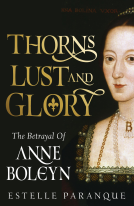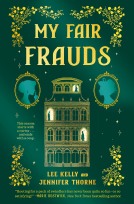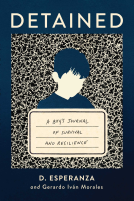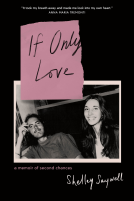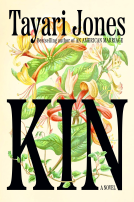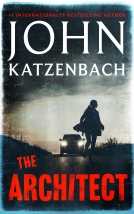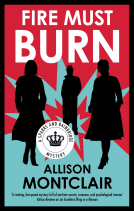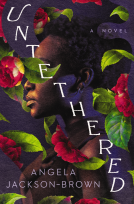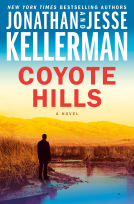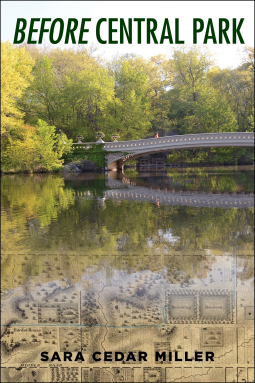
Before Central Park
by Sara Cedar Miller
This title was previously available on NetGalley and is now archived.
Send NetGalley books directly to your Kindle or Kindle app
1
To read on a Kindle or Kindle app, please add kindle@netgalley.com as an approved email address to receive files in your Amazon account. Click here for step-by-step instructions.
2
Also find your Kindle email address within your Amazon account, and enter it here.
Pub Date Jun 28 2022 | Archive Date Aug 03 2022
Talking about this book? Use #BeforeCentralPark #NetGalley. More hashtag tips!
Description
With more than eight hundred sprawling green acres in the middle of one of the world’s densest cities, Central Park is an urban masterpiece. Designed in the middle of the nineteenth century by the landscape architects Frederick Law Olmsted and Calvert Vaux, it is a model for city parks worldwide. But before it became Central Park, the land was the site of farms, businesses, churches, wars, and burial grounds—and home to many different kinds of New Yorkers.
This book is the authoritative account of the place that would become Central Park. From the first Dutch family to settle on the land through the political crusade to create America’s first major urban park, Sara Cedar Miller chronicles two and a half centuries of history. She tells the stories of Indigenous hunters, enslaved people and enslavers, American patriots and British loyalists, the Black landowners of Seneca Village, Irish pig farmers, tavern owners, Catholic sisters, Jewish protesters, and more. Miller unveils a British fortification and camp during the Revolutionary War, a suburban retreat from the yellow fever epidemics at the turn of the nineteenth century, and the properties that a group of free Black Americans used to secure their right to vote. Tales of political chicanery, real estate speculation, cons, and scams stand alongside democratic idealism, the striving of immigrants, and powerfully human lives. Before Central Park shows how much of the history of early America is still etched upon the landscapes of Central Park today.
A Note From the Publisher
This book contains color art, The uncorrected files here are black and white to facilitate a smoother downloading experience for NetGalley users.
Advance Praise
"Sara Cedar Miller sets out to tell the landscape history of Central Park that often goes untold. She expertly uses the historical record to analyze the cultural processes responsible for shaping the landscape prior to the construction of the park. In doing so, she unearths the layers of the landscape to highlight the cultural attitudes embedded in the landscape."
--Phil Birge-Liberman, University of Connecticut
Available Editions
| EDITION | Other Format |
| ISBN | 9780231181945 |
| PRICE | $30.00 (USD) |
Average rating from 6 members
Featured Reviews
 E W P, Reviewer
E W P, Reviewer
On this site. . . . a lot happened
Before Central Park is a fascinating account of how Central Park came to be; it also uses the park (and “pre-park”) as a remarkably effective vehicle for telling the story of the United States. The book starts off a bit slowly—as in, at least as far back as the Cenozoic period (because the typography matters a lot in this story). Miller moves fairly quickly through the Colonial and Revolutionary eras, to focus primarily on the 19th century. The history of the land and its transformation to park encompasses enslavement and freedom; political life and enfranchisement and disenfranchisement; agriculture (including the “free produce” movement that was intended to reduce reliance on goods produced through enslaved labor); economic shifts and labor history; education; religion and burial customs; immigration and nativist sentiment; the displacement of peoples, from Native Americans to Black property holders; public health; environmental destruction and conservation; and infrastructure such as water and sanitation.
The descriptions of the parkland and surrounding environs are quite vivid—the description of sugar refining and bone boiling, for example). There are also plenty of examples of Manhattan real estate mania, as well as dramatic reversals of fortune, cons, corruption, and trickery.
I was most interested in the history of Seneca Village, a community of Black property owners, and the book delivers on that.
Some famous characters, of course, make appearances, but Miller also introduces us to every day individuals and their lives. In addition to African American history, she also focuses on women’s history—including some women who should be more well-known, such as Lanaw Benson, who became the first African-American to own land in the pre-park—using the purchase to free herself from enslavement; real estate mogul Elizabeth Gloucester, who became one of the wealthiest Black women of her day in the mid-19th century; and Mary Pinkney, one of the wealthiest women in the country at the time of her death in 1908 (again through shrewd real estate investments and tax strategy), but dismissed by the NYT in her obituary as a “spinster.”
The book is extensively researched and thoroughly documented. It is possible that no one knows more about Central Park and its history than the author, who is historian emerita and former official photographer at the Central Park Conservancy.
Readers who liked this book also liked:
Shelley Saywell
Biographies & Memoirs, Health, Mind & Body, Parenting, Families, Relationships
Marie Bostwick
Historical Fiction, Literary Fiction, Women's Fiction
